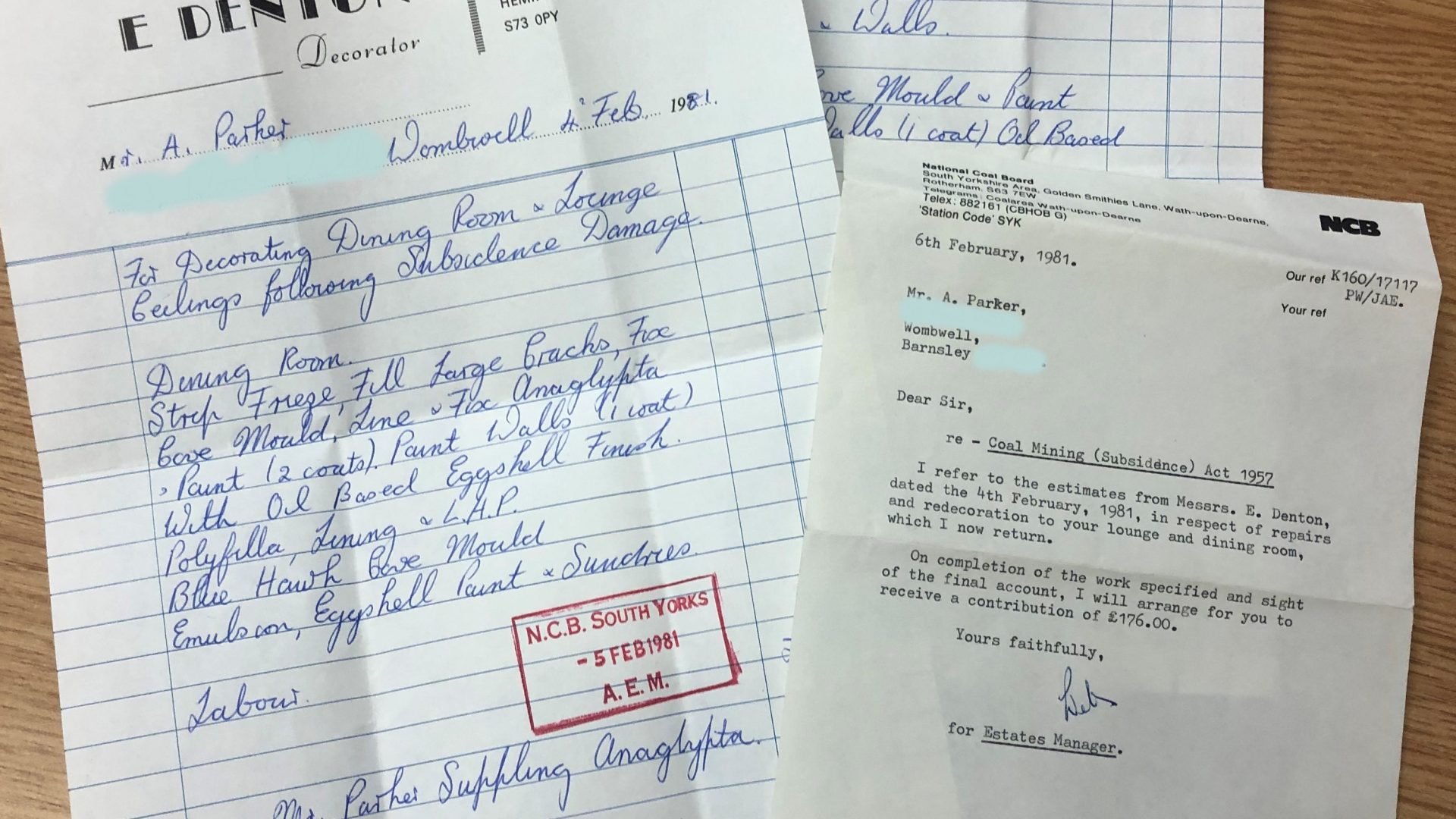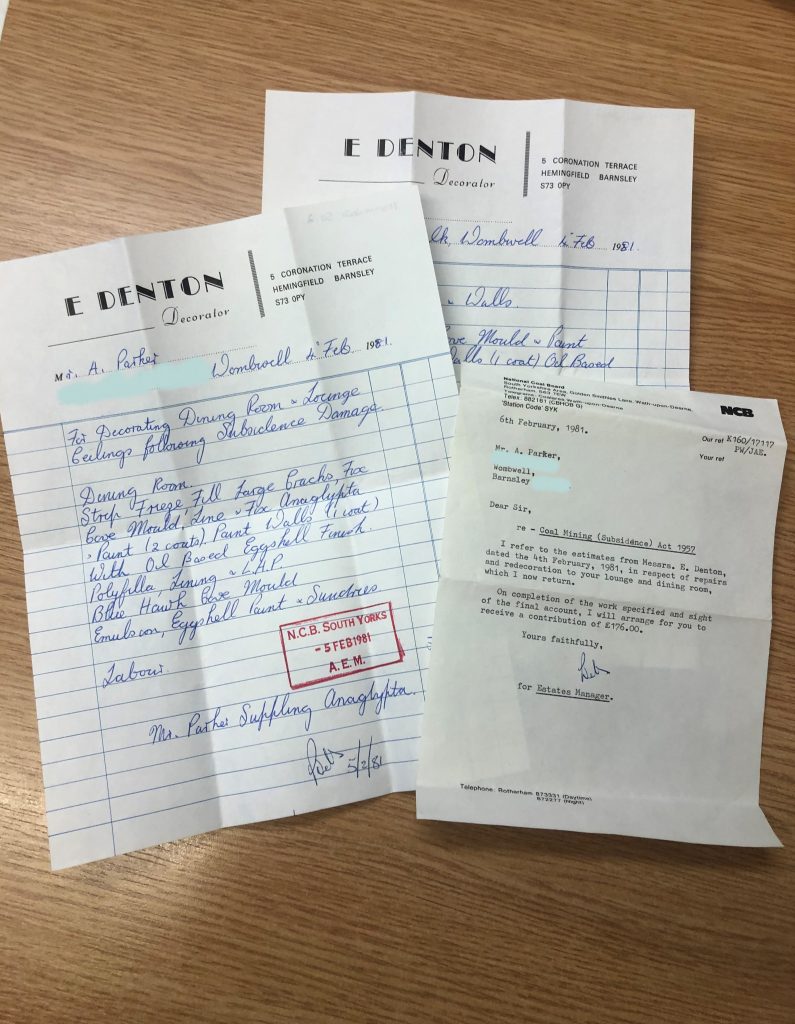Subsidence Letters
12 November 2021

In coalfield areas, the ground we walk on is riddled with underground workings that remain largely invisible to us on the surface. Within a five-mile radius of the Museum alone there are over 1,500 shafts and bell pits. This shows the extent of coal mining in the area and how the industry used to roll on beneath our feet without most of us ever thinking about it.
As a result of this, when buying a house in a former mining area, many people have a mining survey done to check if any mining activity has been carried out beneath or near the property. Head over to our website to find out more about this, and to see some interesting letters we’ve recently added to our collection
When buying a house in a former mining area, many people have a mining survey done to check if any mining activity has been carried out beneath or near the property. You can check if you need a coal mining report by putting your postcode into the Coal Authority’s online search service.
The Coal Board had to take responsibility for the underground work and any problems that came up because of working and getting coal. The Coal Authority have now taken over this responsibility. Problems happen when mining subsidence occurs underneath or near a house or building. The foundations can become weakened because the ground has been hollowed out by mine workings. Damage can range from cracks in the walls and doors sticking because the house has slightly moved, to catastrophic damage with the ground moving so much over time that the building collapses.
Check out these letters that we have recently taken in that relate to a subsidence claim:

Have you ever had to check to see if your home was built on or near a coal mine?